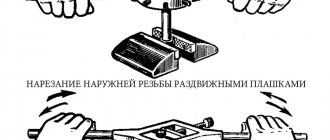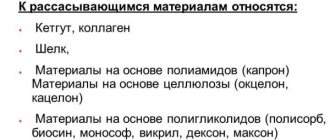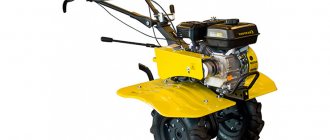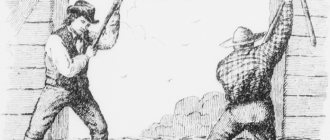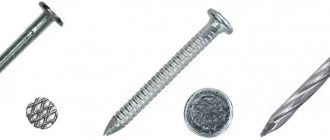Hello friends! The Chinese are believed to have first invented fireworks in the sixth century. Over time, the use of fireworks spread throughout the world and many new variations were created. Now it is impossible to imagine New Year, Independence Day, Guy Fawkes Night or other holidays without sparklers.
What are sparklers?
These are very inexpensive "pocket" fireworks, consisting of a long thin wire coated halfway with flammable substances that can be lit with a match or lighter. When the coating lights up, thousands of sparks fly out and spiral downward until the entire substance is burned. At the same time, we see a very brilliant light, but this spectacle does not last long.
Why don't sparklers burn your skin?
The material burns at a very high temperature, up to 1600 degrees Celsius, but due to the fact that all the particles are negligibly small to cause a burn to the skin, it is practically impossible to get injured if the fires are used carefully.
Although critical cases are not uncommon, this is mainly due to poor-quality production of fireworks or completely careless use.
Sparklers.
Sparkler is a flammable compound (a mixture of chemicals) used in pyrotechnics.
The name is derived from the Indian province of Bengal, where a similar composition was first used for signaling.
A modern sparkler contains barium nitrate as an oxidizing agent, aluminum or magnesium powder as a fuel, dextrin or starch as an adhesive, and oxidized iron or steel filings to produce sparks.
Bengal candles.
Bengal candles are pieces of iron wire with a mixture of sparkler applied to one end.
A special feature of the Bengal candle is the spin mode of combustion - combustion occurs in a circle around the axis of the candle. The process occurs due to the higher thermal conductivity of the wire than that of the combustible material.
Sparklers. History of appearance.
The history of the creation of sparklers goes back to ancient India. It was in Bengal, as historians testify, in the 5th-6th centuries AD. e. During religious ceremonies in temples, a fire of unusual brightness flared up on the altars and quickly burned out. At the same time, depending on the wishes of the clergy and the type of ceremony, “it smelled of evil” (probably the composition contained sulfur powder, which when burned forms sulfur dioxide), or “blessed breath” was spread throughout the temple (probably in this case, instead of sulfur, rosin was used in the composition of the sparkler ).
The high effectiveness of the impact of sparkler fire during religious rites and rituals, in connection with the people’s deification of fire and light, stimulated the rapid development of the use of fiery compositions and the improvement of their formulations by clergy. By the beginning of the 8th century, the compositions of colored fire were already known - blue, green, yellow. Methods have emerged to lengthen the burning time. To do this, the sparkler composition was filled with hollow, dry plant stems and tubes twisted from dried, wide leaves. These first sparklers not only produced a bright flame, but their burning was also accompanied by a characteristic crackling sound.
In the folk traditions and everyday life of the Eastern Slavs, around the same years, “fire fun” took place, which was organized using a club moss. Moss moss or lycopodium, a creeping evergreen herbaceous plant that appears to be moss. Its mature dry spores, when ignited, produce an instant lightning-like flash without smoke. The flame of a moss is amazing and very fun to watch, especially when thrown at night or in the dark. To make a loud noise, add dried and powdered birch leaves.
It was in Europe (according to the Spanish researcher Bertrano Luengo - in Valencia) that Bengal torches and indoor compositions first appeared. The next stage on the way to today's Bengal candles, which are familiar to us, was the appearance of sparkling fire recipes in the 6-7 centuries. The effect was achieved by adding iron scale, crushed cast iron, and later magnesium powder to the flaming compositions of the sparkler.
Thus, the sparkler developed in two directions - as flaming and as sparkling. Flame compositions are usually packed in paper sleeves, sparkling ones are applied in several layers to wooden sticks or metal wire.
Russian pyrotechnician Professor Petrov recommended for making flaming sparklers “sleeves made of 3-turn writing paper, 20 mm in cross-section and 35 cm in length. They put 5 cm of clay into the sleeve and then fill it with the fiery composition of a sparkler on top, lightly tamping it down...” Such a candle burns out along with the sleeve, so it is not possible to hold it in your hands. However, these candles, fixed along the contour of the pattern, give a wonderful “fiery picture” due to their even, bright flame. If, when making a sleeve, we wind it on a wooden stick 5-7 cm in length, then we will get a flaming sparkler candle that is convenient to hold in our hands. These products have survived virtually unchanged to this day. The main manufacturers of such candles are China, India, and Japan.
The modern name of these products is triumphal candles. The products are practically smokeless and can be successfully used indoors. At the same time, both individual candles and combined table toys are produced. This is a tabletop figure made up of three or more candles placed in a stand and the upper part pulled together in a tense state. When the product is set on fire, the candles expand and form a multi-beam burning composition.
Bengal torches are quite popular, especially in Europe. The products are available in different colors (red, green, blue, white, yellow), different sizes (length from 20 cm to 100 cm), and for different purposes (outdoor and low-smoke indoor). Bengal torches were an indispensable attribute of all fireworks shows in the 18th and 19th centuries. They were used to set fire to products and in all situations where it was necessary to suddenly illuminate a large area of the stage or decorations with colored light.
New Year's sparklers.
New Year's sparklers.
In Russia, sparklers have become a traditional New Year's treat! Sparkling sparklers decorate the celebration and delight adults and children!
Sparklers. Bengal candles. History of appearance.
Women's site: I-the-most-beautiful.rf (www.i-kiss.ru)
Author: Ivanov Alexander Vyacheslavovich
Share with friends on social networks:
Other news:
- Broadswords. The history of the appearance of the broadsword.
- Myocardium. Myocardial diseases. Myocardial infarction.
- Zavidovo. Buy land in Zavidovo.
- Stadium. The history of the appearance of stadiums.
- Land for sale in Anapa. Buy land near Anapa.
- Exploration of the Moon. Russian-Chinese lunar program.
- Boychenko Semyon Petrovich - King of Butterfly.
- Nagan system revolver. 3-line revolver model 1895.
- Brezhnev Leonid Ilyich. The era of Brezhnev.
- Khrushchev Nikita Sergeevich
- Beria Lavrenty Pavlovich
- Ampoulomets. History of the use of ampoules.
- Suez crisis. Suez War.
- Kollontay Alexandra Mikhailovna
- Fritz Schmenkel - Hero of the Soviet Union.
- Tutberidze Eteri Georgievna
- Igor Talkov - I will be back, gentlemen Democrats!
- Sinking panties. The history of the band Singing Cowards.
- Vigorous wine. Invigorating wine.
- Tair Salakhov buy paintings. Tair Salakhov sale of paintings.
- Blanching. Why is blanching done?
- Replacing the lens of the eye. Lens replacement surgery.
- Levi Strauss & Co. History of the brand and company.
- Molotov Vyacheslav Mikhailovich
- Sverdlov Yakov Mikhailovich
- Jet Institute. The history of the creation of the jet institute.
- Tukhachevsky Mikhail Nikolaevich
- Dzerzhinsky Felix Edmundovich
- Problems with stool! Types of constipation. Constipation medications. How to normalize intestinal function?
- Kidney problems. Urolithiasis disease. Renal colic. What to do?
- People of Donbass! Take us home, Motherland!
- Frunze Mikhail Vasilievich
- Blucher Vasily Konstantinovich
- General Stankevich Anton Vladimirovich.
- Secular society and secular state. The essence of concepts.
- Balls. History of balls and ballroom traditions.
- Maria Alexandrovna Ulyanova (Blank).
- Gender and gender politics.
- ByteDance Ltd. History of ByteDance Ltd.
- Chapaev Vasily Ivanovich. Biography.
- Douyin - TikTok. Brief history.
- Melon crops. What plants are melons?
- Cultural imperialism is cultural colonialism.
- Intersectionality is a theory of intersections.
- Woke and Wokeism. Woke and Wokeism. History of Wokeism.
- Tick-borne encephalitis. Tick-borne encephalitis virus.
- Radium Institute. History of the Radium Institute.
- French. What is French? The history of the appearance of French.
- Breeches. History of riding breeches. Fashion and breeches.
- Cyclic theory. Cyclic concepts and models in cosmology.
- Leggings. What are leggings? The history of the appearance of leggings.
- Hubble's law. Hubble's law and its significance for astronomy.
- Dark matter and dark energy. Why dark?
- Interaction of galaxies
- The Great Attractor and the movement of galaxies.
- Milankovitch cycles and climatology. History of the discovery of Milankovitch cycles.
- Don't wake up the Russian bear!
- MTPL insurance policy: benefits for disabled people of groups 2-3
- Tribute this!
- SerGa group! History and lyrics of popular songs!
- I was treated by a Donetsk doctor
- LVMH is a French multinational company.
- Wrangler - Wrangler. History of the Wrangler brand.
- Rosatom. History of the Russian nuclear industry.
- Uranus. Uranium mining. Uranium mines in the world and Russia.
- Coaster. The history of the appearance of the coaster.
- Regolith. What is regolith and why is its research needed?
- School. The history of the school.
- Sleep and dreams. Secrets of dreams.
- Samsung Group. History of the Samsung company.
- Gucci! The history of the house of Gucci!
- Philips. History of Philips.
- Panasonic Corporation. History of Panasonic.
- MAC cosmetics! Brand history!
- The Gentleman and John Locke's Theory of Gentleman Education.
- Max Factor! The history of the company.
- Maybelline New York. Everyone is delighted with you, and you are delighted with Maybelline!
- Knights and knightly education.
- Spartan education.
- Chanel is a brand from Coco Chanel.
- Estee Lauder - history of the brand and company.
- Peeling and exfoliation! What is the difference?
- Clinique. History and features of the brand.
- Lancôme - the history of a cosmetic brand.
- Mentality. What is mentality?
- L'Oreal - the history of the company.
- Lip gloss. The history of lip gloss.
- Lipstick. The history of lipstick.
- Mascara. History of mascara.
- Shampoo. The history of the appearance of shampoo. Types of shampoos.
- Soap. The history of soap.
- Christmas balls. History of Christmas balls.
- Bitcoin. Payment system and cryptocurrency.
- Mining. Cryptocurrency mining.
- Alchemists and alchemy.
- Surrogacy. History of surrogacy.
- Plekhanov Georgy Valentinovich. Biography.
- Herzen Alexander Ivanovich. Biography.
- Michelin Guides.
- Haute cuisine. The history of haute cuisine.
- English tutor for children in Altufyevo.
- English tutor for children in Bibirevo.
- English tutor for children in Lianozovo.
- English tutor for children. Otradnoye.
- English tutor for children in Medvedkovo.
- English tutor for children. Vladykino.
- Trekking. What is tracking?
- Tree storage.
- Ancient Russian vivliofika.
- the Russian Academy of Sciences
- St. Petersburg Academy of Sciences
- Talent and talent!
- New political force “Free Democratic Society”.
- Quarantine
- We sell isoprene
- We sell butadiene 1.3.
- Hobby
- Unusual sculptures of the world! Amazing sculptures!
- Stalin
- Pandemic. How does a pandemic differ from an epidemic?
- Trotsky Lev Davidovich
- Epidemic!
- Lenin Vladimir Ilyich
- Sex robots. Are they necessary?
- Butterfly Glasswing!
- Pheromones
- Crowned Dove!
- Genre. Definition and types of genres.
- Peacock-Eye Atlas!
- Kissing day! The history of Kissing Day!
- Infection! The essence of the definition is infection!
- Taoist sexual practices.
- Sexual response cycle.
- Orgasm Control!
- Sex dolls! The history of sex dolls!
- Infection. Types of infections and their characteristics.
- Expanders. Types of expanders for sports activities.
- Coronavirus COVID-19 (Corona Virus Disease 2019).
- Ilizarov apparatus. History of the Ilizarov apparatus.
- Flu. Influenza viruses.
- Viruses and virology!
- Communication. Means of communication.
- Hippocrates. Father of Medicine.
- Avicena. Canon of medical science.
- Alexandre Orlowsky - Alexander Orlovsky
- Saturators! Vending machines for sparkling water.
- Pacemaker. The history of the appearance of the pacemaker.
- An ax is a tool of labor.
- Artist Leon Bakst.
- Pencil. History of the pencil.
- Artist Kustodiev Boris Mikhailovich. Pictures and biography.
- Deterioration of vision. Causes. Gymnastics for the eyes!
- Conversations of lovers! Why you can't talk to a man about sex!
- Sharks! The most dangerous sharks! Where you can be attacked by a shark!
- Beautiful girls pee! Photos of girls peeing!
- Autumn landscapes by Vyacheslav Ivanov.
- Hygienic grooming of pets in Moscow. Hygienic dog grooming in Moscow.
- Primary diesel fuel in Russia.
- Express shedding of pets in Moscow.
- History in Fashion!
- Surrealist artists and their paintings.
- Winter wonders! The kingdom of the snow queen in verse!
- End of the world! When will the world end?
- Lose weight in a week!
- Paper snowflakes! Paper snowflakes - history of origin!
- The liar paradox. What is the liar paradox?
- The first computer mouse was made of wood.
- The world of microorganisms!
- News from Paris! The Eiffel Tower is taller in summer!
- Why do women get intimate haircuts?
- Vagina after childbirth.
- Want to look attractive! Have sex!
- Restoring your figure after childbirth.
- Sex killers! These things have no place in the bedroom!
- Signs of her husband's infidelity were discovered. What to do?
- Love Land - Land of Love!
- Show for the New Year! Santa Claus show and drum master class!
- Spring expression to the music of painting!
- Drum show with glowing drums and master class on drumming.
- Light drums. Light drum show in Moscow.
- Interactive! Show for the holiday! Show for a corporate event!
- Is it worth buying paintings by contemporary Russian artists?
- Calendar. History of the calendar.
- Nativity! When was Jesus Christ born?
- Medieval masterpieces in modern fashion!
- My conquest of Olympus!
- Dress with taste!
- Add some color to your wardrobe!!
- Finances under your thumb!
- Perm invites you to visit!
- How much does contemporary art cost?
- The whole truth about Israel!
- Results of the competition - Reflection of impressions!
- The fusion of two elements “Haute-A-Porter”
- Presentation of the ArtFlash&Staysee capsule collection
- Project “I am a clothing designer!”
- Mitki St. Petersburg and Mitki Moscow!
- Moscow! We teach adults to draw! Individual painting lessons for adults!
- Chaos theory!
- People of the future - space man!
- Concept by Norbert Wiener. Feedback loop and self-regulation.
- Error, errors - error. The world of mistakes in our lives.
- Experience and experiment! Experience! Experiment - experiment!
- Russian language and Russian speech!
- Identification. Personal identification processes.
- Symbols of imperial power!
- Harsh style! Artists of a harsh style!
- Seven things that will always be in fashion!
- A slim body!
- Fitness on the street! Outdoor fitness!
- Internship for students in Moscow. Internships for students in Moscow.
- Jokes about networkers. Jokes about networkers.
- Work from an employer! Jobs for people with higher education!
- I'm glad to see you! I'm glad to see you!
- Do you want to start a business? How to start your own business?
- Where to earn a lot. Where to make a lot of money. How to make a lot of money.
- Vacancies, work, decent salary!
- Come in here! Come here often!
- Marina Bay Sands Hotel in Singapore!
- Brunette Day! A celebration of dark-haired beauties!
- Twists of fate!
- World Kiss Day!
- About love and kisses!
- Who's the best?!
- On the wings of talent!
- Conflict resolution! Conflict resolution!
- Happy habits of happy people!
- On credit! Lend! Borrow!
- Family through the eyes of a child!
- Water crystals and natural wonders!
- Interest in sex?
- I love you forever!
- Lovers' Day!
- Why does a man need connections on the side?
- Jason Bourne! The Bourne Identity!
- "Hipster" - "Hipsters"!
- A woman's ideal weapon!
- Vaccine prevention! Vaccination! Pros and cons!
- Cholesterol. Excess cholesterol destroys your health.
- HIV is the human immunodeficiency virus!
- Vampires! Should you believe in vampires?
- International Women's Day - March 8th!
- Artist Vladimir Ryabchikov
- Be healthy!
- British macho! British macho!
- Oh my God, what a man!
- Concert programs!
- Children's role show!
- For lovers of fantasy stories!
- The best prevention is precaution!
- Avatar – avatar! Avatar legend!
- Angry Bird's dance!
- Steampunk and Steampunk!
- Ophelia Overdose! Ophelia Overdos!
- Be careful while driving!
- Cosplay! Cosplay!
- Formula for happiness!
- Twerk dance! Twerking!
- The art of creating erotic images and fun!
- It's better to do this with a man!
- Active lifestyle and your figure!
- Hey heaven, take off your hat!
- Conductor Serduchka announces a fire alarm!
- Little black dress!
- Body clothes! Bodysuit!
- Pastis – Pastease! Everything for your beloved men!
- Love yourself and your dentist!
- I love life!
- 7 good reasons to lose weight!
- What to do if you or your children are bitten by a dog!
- Problems of sexual apathy!
- What is a spermogram?
- How about I jump!
- We have our own laws of communication
- Jazz bands in the kitchen
- We are all brides
- All the colors of the rainbow are with me
- In the footsteps of God
- Elektronik
- Mediterranean diet and its secrets!
- Ticks and tick danger!
- Hollywood is resting! And Columbia Pictures too!
- 11 very famous models plus
- Star Trek Ashley Graham
- Alla Mikheeva and her collection of evening dresses
- good witch
- May 31st is World Blonde Day!
- Women's fashion in the Russian Empire
- Rating of Russian TV channels and TV programs
- Children are Flowers of Life!
- Be confident!
- I want to become a skilled lover!
- Glamor in fashion – Shock fashion
- Scientists have revealed what can save you from a stroke
- Lavender oil rejuvenates the skin
- Fashion 100 years in 100 seconds
- Downton Abbey. Season 5
- Body art
- Coloring the body
Why are sparklers called sparklers?
The lights get their name from a region called Bengal. Now this region is divided between India and Bangladesh, but it was there that sparklers were first used.
Or rather, their initial use was not festive at all, but rather the opposite. The mixture was used to deter thieves as an alarm. It is not known for certain how this mixture caught fire, but it is a fact that it was used in this way.
Production of sparklers
Sparklers are now mainly produced in China. The country annually produces hundreds of thousands of tons of various pyrotechnics, including all kinds of sparklers, which can have different chemical formulas and compositions.
Here is just a small part of the elements from which a modern sparkler can be made: barium nitrite, dextrin, magnesium powder, steel or cast iron filings, gunpowder, etc. It’s interesting that by using the right proportions and combining the right components, you can get a full-fledged sparkler at home. The main thing is to strictly adhere to the instructions and not to forget about safety precautions.
Today, not a single New Year is complete without all kinds of firecrackers, streamers, firecrackers, fireworks and, of course, sparklers. Moreover, sparklers are one of the most accessible spectacles that bring an atmosphere of joy to the house and allow anyone, even the poorest family, to enjoy it.
Did you like the article? Share!
History or who invented sparklers?
It is difficult to say when and by whom sparklers were invented. But it is very widely believed that Callinikos of Heliopolis, an architect who lived in 670 AD, is considered responsible.
He created the first “hand-made” fireworks, called “Greek fire” and again not for idle purposes, as today, but for the mass destruction of enemies and their ships.
One Greek monk noted in his chronology:
“The architect Callinikos of Heliopolis in Syria fled to the Romans and invented sea fire, which set fire to the boats of the Arabs and completely burned them.”
How it happened that now sparklers are used at all holidays is not known exactly, but they were conceived for a completely different purpose.
New Year's paraphernalia
You can buy sparklers, as well as other New Year's goods, in the 4party online store. Here you will find:
;
The online manager will help you select products individually to suit your wishes. Wide selection, reasonable prices, fast delivery. In Kyiv - by courier, in Ukraine - by Nova Poshta. Pickup is possible in the capital. If you don't like the product, you can return or exchange it within 14 days.
Have a nice New Year!
What were sparklers used for in ancient times?
In addition to what we now know about the military method of use, sparklers were also useful to monks. Namely, during sacrifices, when everyone is already in an excited state from what is happening, and then out of nowhere a flame flares up and then quickly goes out. All this very tensed the situation and encouraged people not to doubt the deity.
In ancient Europe, such a combustible mixture was used for torches, but this method was not very practical and therefore did not last long.
How did sparklers spread around the world?
As soon as Europe concluded a trade agreement with India, the sparkling spectacle first came to the markets of Spain, namely to the largest trading city of that time, Valencia, where the wonderful lights completely captured the attention of both kings and ordinary citizens.
Soon, China, Japan and America gained access to sparklers, where they immediately won hearts and gained enormous popularity among people of different social statuses. Later, the Slavic peoples saw magical sparkling lights. Today, few people know, but sparklers also have a second name - “Triumphal candles.” But it didn’t catch on among the people.
